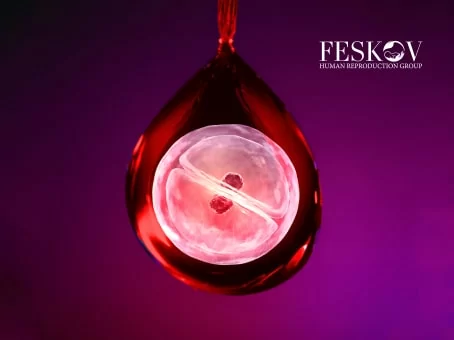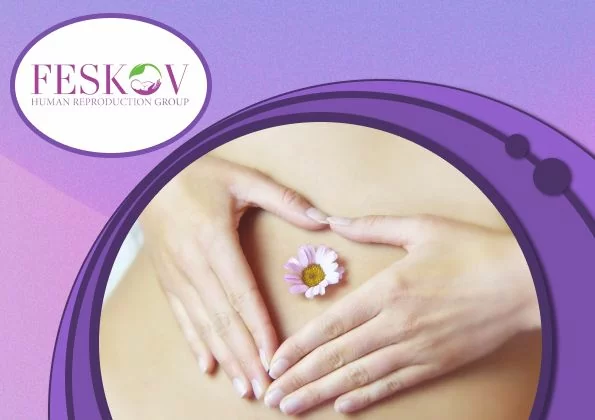
Bleeding After Ivf Implantation: Causes And Treatment

Participation in a reproductive program for women is associated with conflicting emotions.
- What happens after embryo implantation
- What are the causes of bleeding after embryo transfer?
- Which bleeds need treatment?
- What to do in case of bleeding and what is first aid?
On the one hand, there is a desperate hope for success already in the first IVF cycle, joy from the opportunity to have a child, on the other hand, constant anxiety due to a variety of symptoms of my new condition. We will talk about one of them, namely bleeding after IVF, in this article.
What happens after embryo implantation

The first thing worth noting is that ANY bleeding after undergoing IVF must be reported to your doctor immediately! Do not panic ahead of time, perhaps this phenomenon does not threaten your pregnancy, but do not ignore any symptoms.
To understand the possible causes of bleeding after IVF It is necessary to understand what happens after embryo transfer. The mechanism looks like this:
- After entering the uterine cavity, the embryo prepares to implant into it.
- If implantation is successful, the embryo attaches to the uterine wall with the help of microvilli and begins to develop.
- The process of embryo development provokes the production of large amounts of human chorionic gonadotropin (hCG). It is its level that makes it possible to diagnose pregnancy as a criterion for the success of IVF.
After these events, a woman may experience vaginal discharge. Their characteristics are an important diagnostic criterion that allows one to judge the state of a woman’s reproductive health and the success of IVF. Based on the nature of the discharge, the doctor can predict with a high degree of certainty the course of the period after embryo transfer.
To make it easier to track the nature of your discharge, doctors recommend using panty liners.
After embryo transfer, slight discharge of different colors may sometimes appear: pink, red or brown. Discharge after IVF transfer on day 8, as well as discharge after IVF transfer on day 11, are considered normal. All minor discharge in the period from 7 to 12 days, lasting 1-3 days, is a variant of the norm.
If you are very concerned about discharge after IVF transfer on day 8 or discharge after IVF transfer on day 11, you can always consult with your doctor and get confirmation that everything is normal.
What are the causes of bleeding after embryo transfer?
There are a number of reasons that can cause bleeding after embryo transfer. They are associated with the processes occurring in a woman’s body during a given period.
The main reason may be previous controlled stimulation of superovulation (in which it is possible to obtain several eggs). This bleeding lasts 1-2 days, is painful and not profuse. It does not pose a threat to your health or your pregnancy.
The second possible reason could be implantation of the embryo into the wall of the uterus. To be able to develop, the embryo must overcome the upper layer of the endometrium with its villi. During the process, microtraumas are formed that release blood. This bleeding may be accompanied by unpleasant, uncomfortable, but not painful sensations in the lower abdomen. It looks like several stains of blood or urine on a pad or underwear that are brown, pink, or dark red in color. Duration varies between several hours and 1 day. The main characteristics are a meager amount of blood, equal intensity of bleeding throughout the entire period.
Usually the doctor warns the woman about the possibility of such bleeding so that it does not cause panic or disturb peace. However, there may not be any bleeding. In many cases, embryo implantation occurs without bleeding and does not manifest itself at all. Therefore, you should not worry about the absence of bleeding.
Other possible causes of bleeding after embryo transfer:
- stress (including stress during IVF. Try not to worry and get proper rest);
- non-compliance with medical recommendations (after embryo transfer, the doctor gives strict recommendations, for example, a ban on hot baths. Violation of this requirement can lead to bleeding).
Bleeding in the first or second week after embryo transfer is considered normal. That is, bleeding after embryo transfer on day 10, blood spots on day 11 after embryo transfer, blood spots after IVF transfer on day 15 ― all these phenomena are absolutely normal. This does not prevent you from obtaining advice and confirmation from your attending physician.
Three weeks after the transfer, when the pregnancy is confirmed and developing, there should be no bleeding. Their appearance can be an alarming symptom of threatening problems and disorders. Contact your doctor immediately!
Which bleeds need treatment?

In addition to the standard and common bleeding after embryo transfer on day 10, blood spots on day 11 after embryo transfer, blood spots after IVF transfer on day 15, a woman may experience blood spots after IVF transfer on day 18, blood spots after IVF transfer on day 20 day, bleeding on the 20th day after embryo transfer and even blood spots after IVF transfer on the 25th day. Such phenomena can pose a threat in the form of termination of pregnancy or even be life-threatening for the woman.
Signs of dangerous bleeding:
- Amount of blood: Heavy bleeding in a short period of time, bright pink or red.
- Pain: bleeding is accompanied by severe and sharp stabbing pain.
- Duration: bleeding continues longer than 3-4 days.
- Period: Bleeding in the third week or later after the transfer (for example, blood spots after an IVF transfer on day 25) can also be a sign of a threatening condition.
If any of these symptoms appear, you should immediately call an ambulance and contact your doctor and strictly follow his recommendations.
What to do in case of bleeding and what is first aid?
If the bleeding pattern meets the normal criteria, then there is no need to worry, because stress can increase it. Report all the circumstances to your doctor and follow all his instructions. During this period, it is necessary to adhere to a gentle lifestyle, eliminate physical activity, stress, get more rest and monitor the nature of bleeding, informing the doctor about changes.
If you experience symptoms of dangerous bleeding, act clearly and quickly, as blood spots after IVF transfer on day 18, blood spots after IVF transfer on day 20 and bleeding after IVF transfer on day 20 can be a sign of miscarriage and pose a threat to your life.
Procedure in case of dangerous bleeding:
- Call an ambulance and inform your doctor.
- Do not panic: panic increases heart rate and, as a result, bleeding. It also prevents you from acting adequately.
- If you have been prescribed hemostatic drugs, take them.
- Take a horizontal position.
- Apply a cold compress to your lower abdomen. This will reduce the amount of bleeding.
In some cases, bleeding may simply mean unsuccessful IVF: implantation of the embryo did not occur, it was rejected. Try not to be discouraged: statistically, second and third embryo transfers are usually more successful than the first one. Also, if you have good ovarian reserve ― you can give yourself time to come to the birth of a child even naturally.
There is a chance (according to some sources, 25%) that after unsuccessful IVF, pregnancy will occur naturally after intercourse. Don't turn away from the path, keep going towards your dream of having a baby. The main thing is to listen to the advice and prescriptions of your doctor.
Request a free consultation with our doctor and find out how the period after embryo transfer may progress and how not to miss alarming symptoms.
- Surrogate motherhood - how not to be deceived
- The cost of parenthood: an overview of reproductive programs from leading clinics
- Advantages of guaranteed surrogacy programs over programs with guaranteed compensation
- Disadvantages of Egg Donation - Only Truth about the Procedure
- Unique Cases of Giving Birth to Children
- Egg donation near me
- Donor egg + IVF: cost, guarantees, pitfalls
- Foods to boost your fertility
- Pregnancy After Miscarriage: Getting Pregnant
- Women's Age And Fertility
- Alcohol And Fertility: Drinking While Trying To Conceive
- Let's date you in Paris!
- Egg donor in Europe
- Disadvantages of Egg Donation - Only Truth about the Procedure
- Сan Egg Donation Cause Cancer?
- How Does Egg Donation Work?
- What is Artificial Insemination in Humans?
- When Donor Egg Cycles Suddenly Fail: Potential Reasons
- Reproductive health doctor interview
- HIV Infection
Join my mailing list to receive the latest news and updates
Is bleeding after IVF implantation normal?
read moreMinor bleeding in the first two weeks after embryo transfer is usually not dangerous and is normal. Long-term, severely painful and/or heavy discharge requires medical supervision 3 weeks after embryo transfer.How soon after IVF can implantation bleeding occur?
read moreYou don't necessarily have implantation bleeding. It usually happens 10-14 days after embryo implantation.What are the potential causes of bleeding after IVF implantation?
read moreThere may be several reasons. The most common: bleeding due to the destruction of the vessels of the uterine wall by the embryo (implantation bleeding), stress (including due to the IVF procedure itself), non-compliance with recommendations (taking a hot bath).Is bleeding a sign of implantation failure during IVF?
read moreBleeding in the early postimplantation period, on the contrary, may be evidence of successful embryo implantation. Bleeding 3 weeks after IVF may be a sign of failed implantation, but can also be caused by other reasons.
